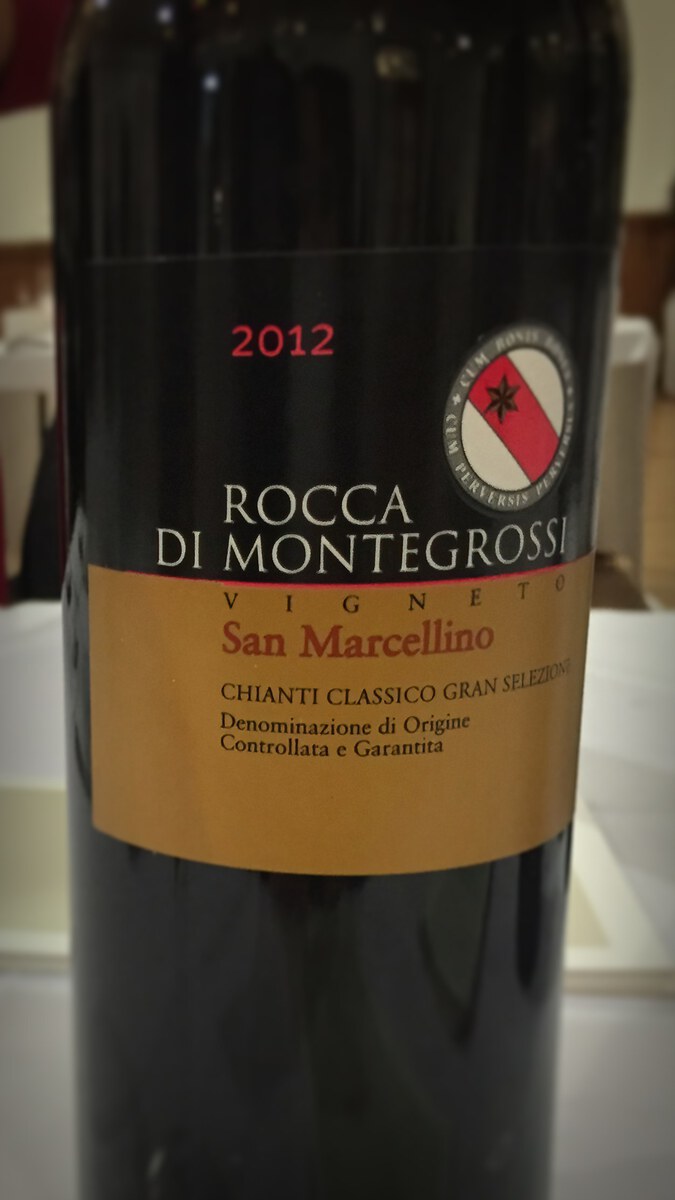Rocca di Montegrossi "San Marcellino, Chianti Classico" 2012
Blend of Sangiovese / Canaiolo / ColorinoFirm and powerful. Dark cherry, plum, dried violets.
Tasting Notes
Rocca Montegrossi, San Marcellino 2012 Chianti Classico shows dark cherry, plum and dried flowers on the nose.
The mouthfeel is firm and chewy with nice acidity. The finish is persistent and long.
The 2012 San Marcellino, Chianti Classico from Rocca di Montegrossi will truly blossom with 5 more years in bottle.

|
|
Rocca di Montegrossi |
|
|
San Marcellino, Chianti Classico |
|
|
Red & Still |
|
|
Italy |
|
|
Chianti, Tuscany |
|
|
Sangiovese, Canaiolo, Colorino |
|
|
2012 |
Learn more
Sangiovese
Wine making grape
Sangiovese is a red Italian wine grape variety named after the Latin sanguis Jovis, which means “Jupiter’s blood.” Though it is native to most of central Italy, from Romagna to Lazio, Campania, and Sicily, it is best known outside of Italy as the sole component of Brunello di Montalcino and Rosso di Montalcino, as well as the primary component of the blends Chianti, Carmignano, Vino Nobile di Montepulciano, and Morellino di Scansano, though it can also be used to make varietal wines like Sangiovese di Romagna
Link to here... | Derived from 'Sangiovese' on WikipediaCanaiolo
Varietal
Canaiolo is a red Italian wine grape that is grown throughout Central Italy, but is best known for its production in Tuscany. Lazio, Marche, and Sardegna are among the other regions where Canaiolo is grown. A white berry mutation known as Canaiolo bianco occurs in Umbria. It’s always blended with Sangiovese and Colorino to make Chianti wine, and it’s a key but secondary component of Vino Nobile di Montepulciano. It has been a key component of Chianti’s history, and during the 18th century, it may have been the primary grape used in a higher percentage than Sangiovese. Its ability to partially dry out without rotting for use in the governo method of prolonging fermentation may have contributed to its popularity. Bettino Ricasoli’s Chianti recipe called for Canaiolo to play a supporting role to Sangiovese in the 19th century, introducing fruitiness and softening tannins without detracting from the wine’s aromas. Canaiolo vines did not react well to grafting onto new American rootstock after the phylloxera outbreak, and the grape eventually fell out of favor. In 2006, the total area planted with Canaiolo in Italy was less than 7,410 acres. Today, Tuscan winemakers are making new efforts to find better clonal selections and reintroduce the variety to mainstream use.
Link to here... | Derived from 'Canaiolo' on WikipediaColorino
Varietal
In Tuscany, the Colorino grape variety is the most commonly grown. The grape is noted for its dark color and is commonly used as a coloring agent in red blends. Because of its obsession with and use of the governo winemaking method, it played a minor role in Chianti’s history. Colorino, like Canaiolo, did not rot easily when partially dried before being added to fermenting grape must. The grape, however, did not have the same amount of fruit or softening effect as Canaiolo, and it fell out of favor. Tuscan winemakers became more involved in the variety in the late 1980s, seeing parallels between it and the part Petit Verdot plays in Bordeaux blends. Colorino was planted to provide darker colors and structure from phenolic compounds in the thick skin of the grape, but without the overpowering aromatics of Cabernet Sauvignon. The resurgence of Colorino was short-lived, and by the turn of the century, it had returned to a minor position in Tuscan wines.
Link to here... | Derived from 'Colorino' on Wikipedia